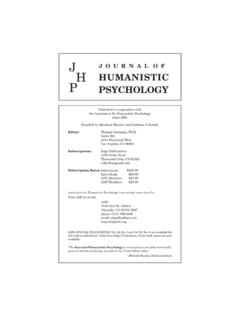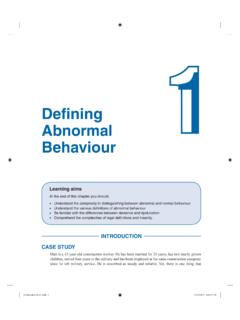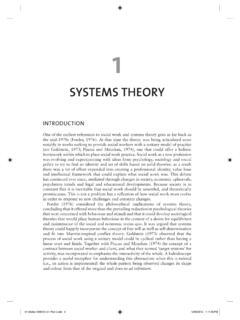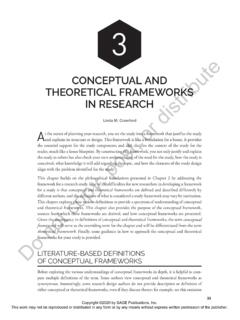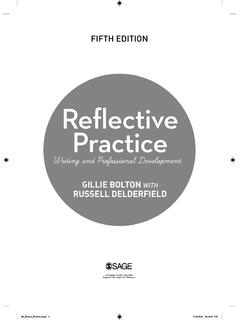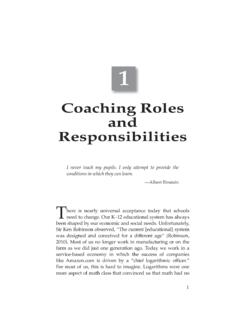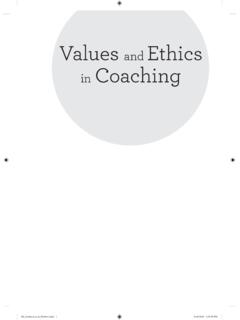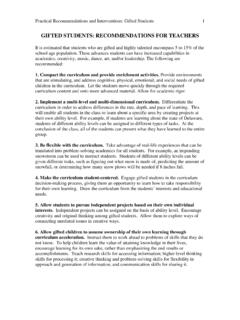Transcription of CHAPTER 3 Criminological Theory and Crime Explanation ...
1 CHAPTER 3. Criminological Theory e and Crime Explanation ut rib Dan Okada t is SCIENCE/SOCIETY/LAW/ Crime /CRIMINOLOGY. d In studying Crime , or examining the various constructs that provide the structure or from which to study Crime scientifically, what is sometimes overlooked is that pro- cess, although important, is nonetheless an academic exercise. The canons of sci- ence demand value-free investigation and consideration. This can be understood t, against the political incrimination of flip-flopping, which has no relevance in s scientific inquiry. The aim is to gather as much useful information as possible, that po is, to collect data and then to competently assess what has been collected. It is not until this analysis has been completed that any sort of determination, one way or another, can be made.
2 Scientists must be constitutionally willing to change their minds because their minds can be made up based solely on what they find. This , same reminder is provided to criminology students who are regularly frustrated py when they realize that these explanations that they have painstakingly committed to memory are only theories. Scientific theories are constructed to fail as well as to succeed. A good Theory is intended to be controversial, to stimulate investigation, co and to be tested and examined and ultimately may indeed be discredited based exclusively on the data collected in testing it. The outcome of Theory construction and testing provides understanding, even t enlightenment. Because this discussion comes in conjunction with lessons in investi- no gation and jurisprudence, a context must be provided.
3 There is only modest interest in turning these explanations into courtroom legal defenses or prosecution strategies. Criminological theories attempt to explain what is often inexplicable and to examine o what is often the cruelty, oppression, or even evil some visit on others. They are sci- entific examinations of a particular social phenomenon. This said, there is no attempt D. in this presentation to be comprehensive in either the discussion of individual theo- ries or their number but rather to highlight them, to pique the curiosity of those who become interested, and to thus stimulate greater subsequent exploration. 33. Copyright 2015 by SAGE Publications, Inc. This work may not be reproduced or distributed in any form or by any means without express written permission of the publisher.
4 34 Part I Criminal Justice and Criminological Paradigms Akers (1994) noted that the criteria for determining the value of any Theory are their logic, testability, empirical support, and utility. The hope is that upon con- structing reasonable explanations and then testing their fit, the enterprise will influence reasonable and effective enactment of public policy that will minimize levels of victimization and reduce instances of Crime . Thus, Criminological theories are created so that we can better understand why people behave as they do and e that in understanding the why, we can respond more effectively to these actions ut and actors. Criminology focuses on Crime as the question, Why? This differs from the crimi- nal justice question, which asks, What now?
5 Answering the why question offers a rib range of challenges and opportunities from many perspectives and disciplines. In this endeavor there are many right answers. For instance, introductory criminol- ogy and criminal justice students learn that the earliest explanations of criminal t is behavior were theological in orientation. Demonic possession, for instance, was once believed to be the sole answer to the question, Why? (Vold & Bernard, 1979). d As technology and the scientific method evolved and influenced scholars, theories likewise increased. It is important to appreciate this evolution so that we can better understand and assess contemporary theories. or A Theory is a series of statements that seek to explain or understand a particular phenomenon.
6 Merton (1968, pp. 59 60) suggested that those with a more practical t, orientation should focus their attention on what he called theories of the mid- range, that is, specific explanations of specific behaviors rather than look for one s broad-based Theory , or what Babbie (2013) identified as a nomothetic, comprehen- po sive, all-inclusive Explanation that in this sense addresses all forms of Crime . This exercise, naturally, would be fraught with frustration because of the nature, breadth, and complexity of Crime . A concentrated, more uniquely directed, that is, idio- graphic, Theory that seeks to explain specific Crime typologies would serve end users , py and students more effectively. The professoriat is often guilty of passing along the myriad explanations, what are called here named theories, through lectures that pass as academic erudition co but that are often interpreted by rote and less so by conviction.
7 It is no wonder that because of their abundance, these explanations are discouragingly seen as superflu- ous or even worse, irrelevant. A legitimate criticism is that if everything is impor- tant, then what is truly important? From a student's perspective, the question t no remains, What is the relevance of studying theories? The abstract reasoning neces- sary to consider scientific theories from a particular academic perspective often holds little attraction for the student who is more interested in the practice and application of criminal justice. While examinations that focus on why may not o compete favorably against interest focusing on how, or who, or what now, the why D. is the focus of this examination. A lengthy discussion could be had defining crimi- nology and its parameters, but that is not the intent here.
8 Criminology is the study of Crime ; specifically, the focus here will be on the causes of Crime by those who engage in it. Copyright 2015 by SAGE Publications, Inc. This work may not be reproduced or distributed in any form or by any means without express written permission of the publisher. CHAPTER 3 Criminological Theory and Crime Explanation 35. MICRO-LEVEL ANALYSES. Biological Explanation While it is true that many criminal justice students believe that the answers to e Crime understanding can be found in the social sciences, many others gravitate to ut these disciplines because of their previous inconsistent or modest academic success in what some perceive to be the harder, that is, more rigorous, sciences: biology, chemistry, physics, and math, believing that a less arduous journey to a college rib degree can be found in a practical major.
9 The history of criminal justice program acceptance has met a complementary bias as colleagues in the natural sciences have been quick to discredit their social science brothers and sisters. It can be argued that t is this has also led to the infusion of sophisticated methodological designs and analy- ses as a response to charges of lack of scientific rigor. d Students are compelled to enroll in a required criminology Theory class and, as a typical starting point, are thrust headfirst into the criminal justice/criminology- or catechism and exposed to the father of modern criminology, Cesare Lombroso. Atavism and the born criminal now enter their vocabulary as they listen to how the scientific method was first introduced to the study of criminal behavior along with t, data collection, hypotheses testing, and ultimately statistical analysis.
10 Eyes roll, shoulders tense, and teeth grit. s Lombroso's education and training led to his securing the role of chief patholo- po gist of the Italian penal system (Sellin, 1937). His lasting contribution to criminol- ogy was in being the first to ask the question, Why? Why did those convicts to whom he had access, and on whom he performed autopsies, commit the crimes for which they were convicted? Given the technology and research methods of this day, , py Lombroso offered cutting-edge analysis. The answer had to lie in each individual's physiology. Since all these criminals were male and possessed similar physical char- acteristics that were pronounced and obvious, the traits that each carried from birth co had to provide the answer to the question why.
